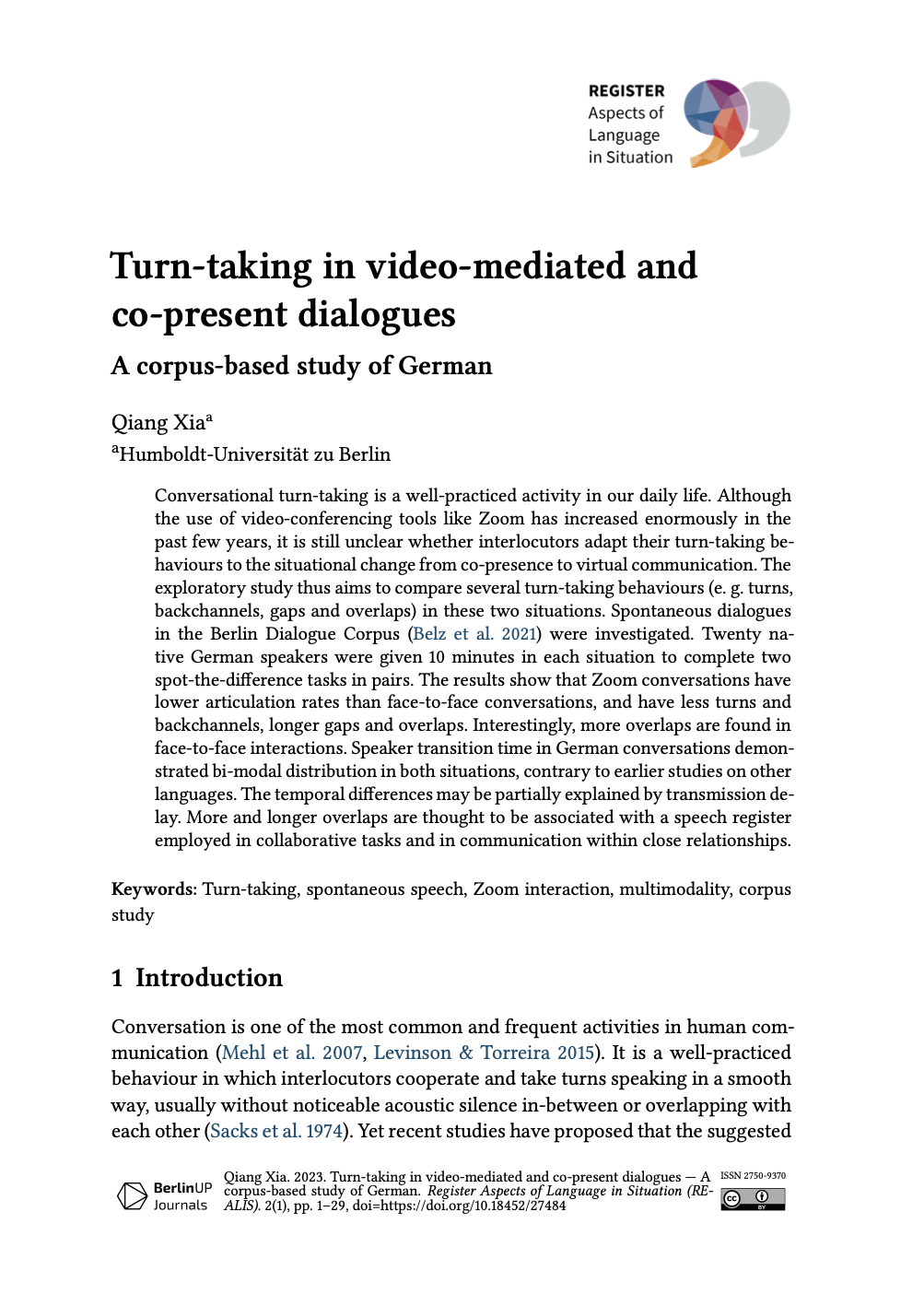Turn-taking in video-mediated and co-present dialogues
A corpus-based study of German
DOI:
https://doi.org/10.18452/27484Keywords:
turn-taking, spontaneous speech,, Zoom interaction, multimodality, corpus studyAbstract
Conversational turn-taking is a well-practiced activity in our daily life. Although the use of video-conferencing tools like Zoom has increased enormously in the past few years, it is still unclear whether interlocutors adapt their turn-taking behaviours to the situational change from co-presence to virtual communication. The exploratory study thus aims to compare several turn-taking behaviours (e. g. turns, backchannels, gaps and overlaps) in these two situations. Spontaneous dialogues in the Berlin Dialogue Corpus (Belz et al. 2021) were investigated. Twenty native German speakers were given 10 minutes in each situation to complete two spot-the-difference tasks in pairs. The results show that Zoom conversations have lower articulation rates than face-to-face conversations, and have less turns and backchannels, longer gaps and overlaps. Interestingly, more overlaps are found in face-to-face interactions. Speaker transition time in German conversations demonstrated bi-modal distribution in both situations, contrary to earlier studies on other languages. The temporal differences may be partially explained by transmission delay. More and longer overlaps are thought to be associated with a speech register employed in collaborative tasks and in communication within close relationships.
Downloads
Published
How to Cite
Issue
Section
License
Copyright (c) 2023 Register Aspects of Language in Situation

This work is licensed under a Creative Commons Attribution 4.0 International License.



